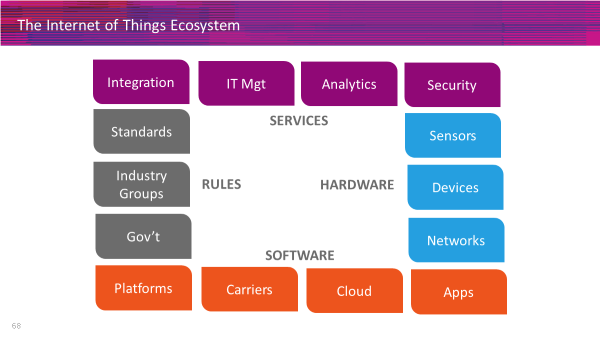 CompTIA’s Industry Advisory Councils convened for their third face-to-face meeting of the year during CompTIA ChannelCon last month with a stated goal – determining best practices for selling emerging technologies.
CompTIA’s Industry Advisory Councils convened for their third face-to-face meeting of the year during CompTIA ChannelCon last month with a stated goal – determining best practices for selling emerging technologies.
Executives from multiple tech sectors, including information technology, business applications, drones and smart cities met for an all-day Joint Advisory Council Meeting. Each council developed and presented a session of their choosing focused around educating IT solution providers on the importance of engaging the new tech buyer and the different ways to incorporate new emerging technologies into their portfolios.
The Buyers Journey
The Business Applications Advisory Council and the Channel Advisory Board collaborated on a session to teach IT solution providers about the importance of understanding buyer personas; especially now that 65 percent of all technology purchases are made or influenced by the line-of-business buyer. The lack of knowledge in servicing these new buyers makes it difficult for technology solution providers (TSPs) to engage, communicate and solve their business problems.
Add to that the fact that TSPs must transition away from technical discussions and focus more on business process improvement, specialization and verticalization. This brings us to why these two groups focused their message around the importance of understanding different buyer personas and incorporating knowledge of those personas when experiencing the 11 steps of a buyer’s journey.
What are the steps of the buyer’s journey and why are they so important? According to CompTIA research, 80 percent of businesses say they’re delivering superior products and services, but only eight percent of customers agree, so where’s the disconnect?
What we’ve found is a direct lack of knowledge of what the buyer really needs. The 11 steps of a buyer’s decision-making process are:
- Addressing pain
- Discovery
- Awareness
- Research
- Training
- Delivery
- The actual purchase or buy
- Negotiations
- Billing and payment
- Adoption
- Recapping value
These steps repeat themselves so that TSPs can once again identify new pain points and bring the problem full cycle to conclusion again.
Getting Drones Off the Ground
The Drone Advisory Council did an interview session featuring two traditional TSPs that added drone services to their portfolios. They were both attracted to drone services based on their many use-cases and high profitability factor but they each entered the market differently. The hardware-centric agriculture VAR interviewed decided to partner with a drone service provider to assist them in learning how to use drones on their own farm. However, with their agriculture specialization and hundreds of potential farmers as customers, this would mean providing drone services to those hundreds of farmers covering thousands of acres -- a little too much to bite off. Instead, they decided to build a business model to simply sell the drone hardware and service plans via subscription, as well as offer training on how to get certified to fly their own drones.
The public safety and law enforcement TSP interviewed decided to build a drone practice to complement existing IT services. He chose to sell drone services directly, yet offered the required training, so his clients could build their own practice. Like other verticals, law enforcement has numerous use-cases including evidence retrieval, crime scene investigations, search and rescue, accident reconstruction and keeping watch on convicted felons. In the end, both TSPs offered tremendous value by providing flight, regulations and compliancy training, as well as FAA Part 107 exam training so they could become commercial drone pilots, as well as training on different software platforms and data analysis for specific vertical markets. Bottom line, this is a great way TSPs can help their clients solve business problems while at the same time providing more precision in a safer manner and with much more efficiency in the process.
Cities Get Smarter
Finally, the Smart Cities Advisory Council conducted a panel discussion moderated by CompTIA’s research team focused on educating TSPs on how to enter the complex and crazy world of smart cities and communities. As the Internet of Things (IoT) ecosystem visual below indicates, there’s a lot to learn to enter this fast-growing practice area, especially for the IT solution provider.

“It’s all about connectedness and the value of the data that comes from that connectedness,” one panelist said. “We’re at a point where we can tell someone’s going to get sick before they get sick.”
In looking at smart cities, TSPs should be thinking about traditional infrastructure maintenance and helpdesk support, as well as business optimization and innovation. There is such wide variety of products and solutions in IoT that it’s important to find the one IoT use-case that makes sense for your business, then partner with that vendor to bring you into deals. But stay as vendor agnostic as you can, engage with solutions architects and meet others at industry events with whom you can partner. No one can do it by themselves.
Click here to get full coverage of ChannelCon 2018!

 Add CompTIA to your favorite RSS reader
Add CompTIA to your favorite RSS reader

